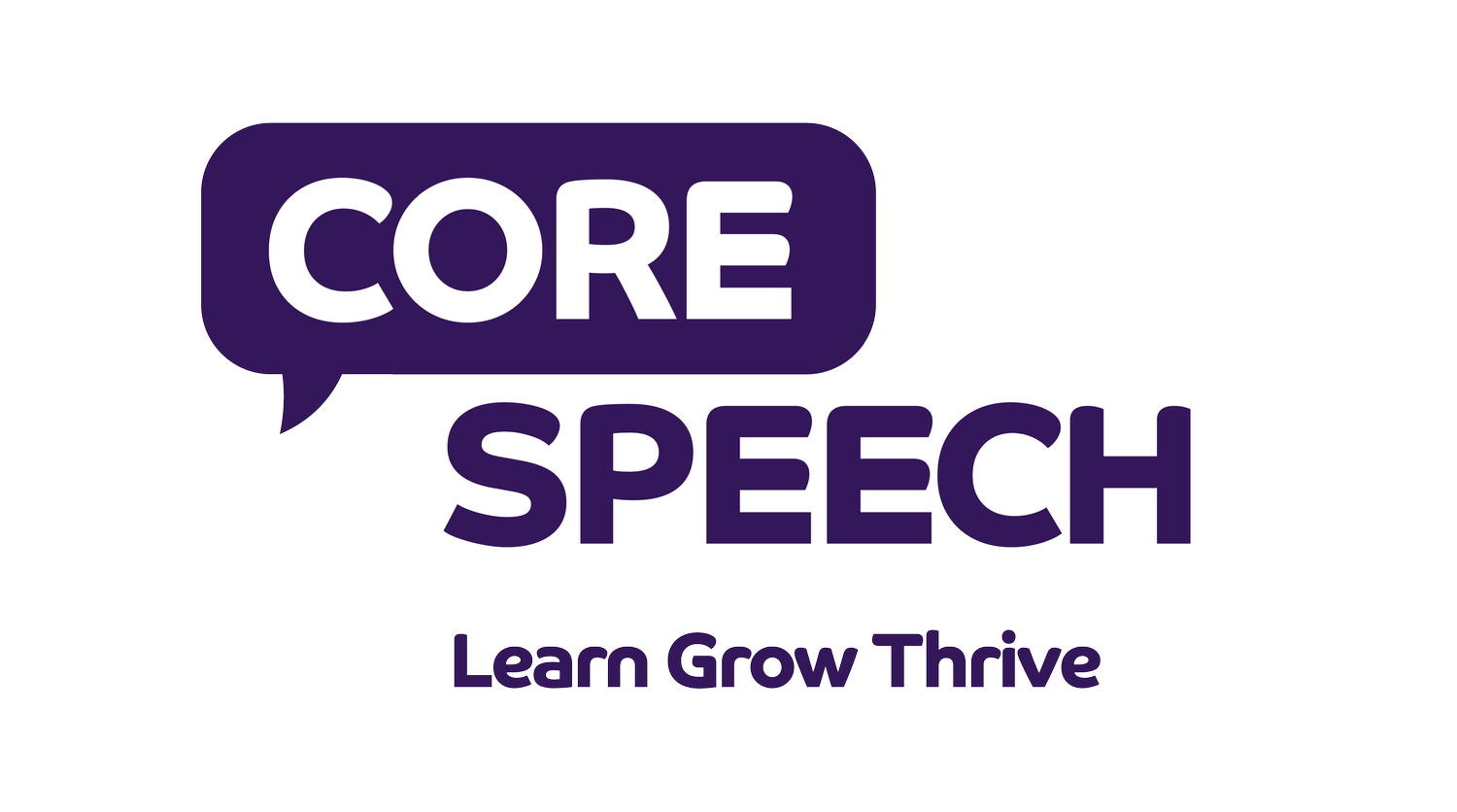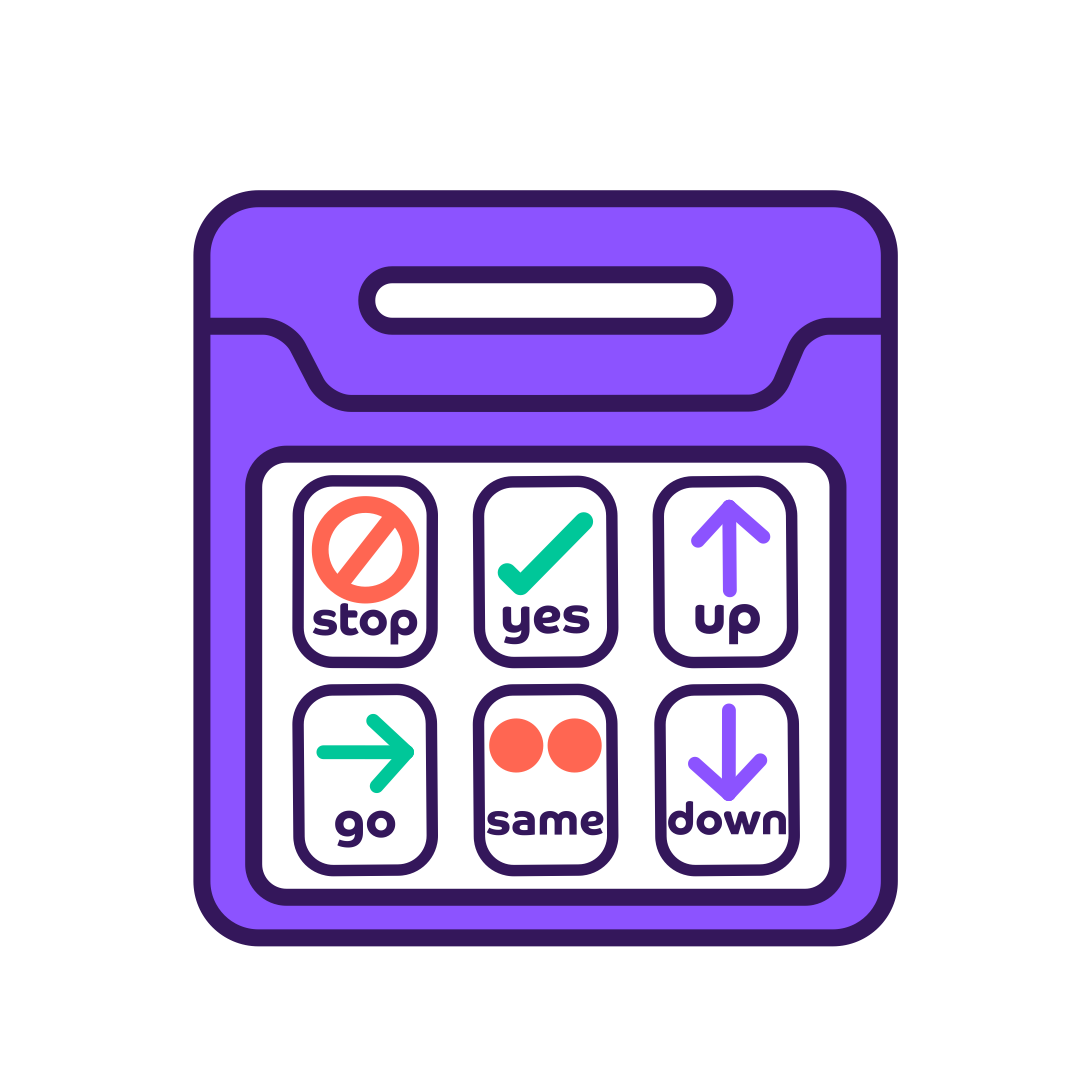Augmentative and Alternative Communication (AAC)
Augmentative and Alternative Communication (AAC) are a range of strategies and tools that help individuals who are unable to use verbal speech successfully communicate with others.
AAC is an umbrella term used to describe a range of different methods that a person uses to communicate additional to or in replacement of verbal speech. This includes both unaided methods (e.g., signing, gestures, facial expressions, body language) and aided methods (e.g., Aided Language Display Boards, Communication books, Electronic Communication Devices).
Using AAC supports individual to successfully communicate and provides them with a consistent method to express their wants, needs, thoughts, and ideas to others. This enables them to experience the power of being understood and continue the circle of communication.
Emma is experienced in using a wide range of different AAC tools and can assist you in determining the most appropriate system for your child by taking into consideration their current strengths and abilities in order to identify suitable access methods and language systems.
Core Speech can also provide ongoing training and therapy sessions to help your child implement use of their AAC to their fullest potential and ensure they Learn, Grow and Thrive.
Core Speech has access to a wide range of communication applications and tools which can clients can try during their assessment and therapy sessions. We also have a range of Aided Language Display Boards available to download today.
“For people without disabilities, technology makes things easier. For people with disabilities, technology makes things possible.”
- IBM
Core Speech can provide AAC support in the following areas:
Unaided systems such as use of Key Word Signing (e.g., Makaton).
Low tech (e.g., paper based) communication books and symbols including Pragmatic Organisation Dynamic Display (PODD).
Electronic devices with specially developed communication applications applications (e.g., TD Snap, Proloquo2go, LAMP, Touch Chat).
Alternative access methods for individuals with physical differences including switch buttons and eye gaze.
“The goal of AAC is autonomous communication. That is being able to to say what I want to say, to whoever I want to say it to, whenever I want to say it, and however I choose to say it.”
- Gayle Porter, Developer of PODD
8 Signs your child may benefit from access to AAC:
1. Verbal speech is developing but not yet effective in meeting all communication needs. This could include Gestalt Language Processors.
2. Speech is highly unintelligible and difficult to understand to familiar or unfamiliar people. This could be due to a Speech Sound Disorder, such as Childhood Apraxia of Speech (CAS).
3. Verbal speech has not developed due to possible neurological differences, such as Cerebral Palsy or certain genetic conditions.
4. Verbal speech has developed but is unreliable due to fluctuations in health, fatigue, and emotional regulation.
5. The individual experiences discrepancies in verbal speech across environments and communication partners and needs support to communicate consistently.
6. The individual requires support to develop their use of specific body movements to communicate due to physical differences and limitations (e.g., switch access, eye gaze control).
7. The child can only communicate for a small range of communication functions using their current skills and needs support to be able to communicate a range of functions (e.g., self-advocating).
8. The individual’s play opportunities are restricted due to physical differences and limitations.
All of the above signs indicate that a child may benefit from use of AAC to support their functional communication skills and participation.
For more information regarding how Core Speech can support your child, please contact us.



